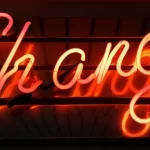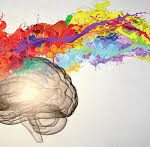Corporate arts-based learning is an interdisciplinary approach to learning, using the arts as a pathway to explore non-art topics such as leadership and management in business. Art forms include painting, sculpting, theatre improv, storytelling, poetry, and music.
The goal of arts-based learning is not to teach people to be artists but to create immersive learning experiences using artistic processes to help people gain new insights and perspectives about business challenges.
Why the arts?
We cannot find all the answers to our challenges in the world of the rational, logical, and scientific. Consequently, the arts are emerging as a role model for business to adopt. Through art, we can make it safe ask the deeper questions that lead to the emotional truth about a situation.
Art making helps us slow down, quiet the mind and put us in touch with our inner wisdom. MacLuhan said artists are the radar of the future. How? The art making process takes people out of the realm of analytical thinking and into the realm of silence, reverie, and heightened awareness.
Art creates a bonding experience that facilitates collaboration and accelerates the ability get to the heart of a problem. Drawing or painting images illustrates how differently we see things, and helps us appreciate that many points of view contribute to the whole. Images externalize the unconscious and make tacit knowledge visible. Art-based activities can be used strategically to create safety, build trust, find shared values, and shift perceptions. Combining right-brain imagination with left-brain logic and analysis increases the capacity for breakthrough ideas and insights that lead to success.
Four Contributions of Arts to Business
- Metaphors: Artistic metaphors are tools for generating new types of conversations, for seeking new perspectives and for making mind shifts that can lead to innovation.
- Artistic capabilities: Artistic capabilities and competencies vary from communication and presentation to improv, drawing and painting as well as applying intuition.
- Artistic events: Ambiguity is deliberately used as inspiration and provocation through events ranging from ‘concerts of ideas’, Forum Theatre, painting processes for team-building, drumming sessions, storytelling, improvisation practice, etc.
- Artistic products: This arena involves social innovation and artistic products, including product design as well as new training programs and change processes.
Think like an artist
“A good artist, it is often said, is fifty to a hundred years ahead of their time. The artist must depict this new world before all the evidence is in. … Leaders must learn the same artistic discipline, they must learn to respond or conceive of something that will move in the same direction in which the world is moving, without waiting for all the evidence to appear on their desks. To wait for all the evidence is to finally recognize it through a competitor’s product.”


